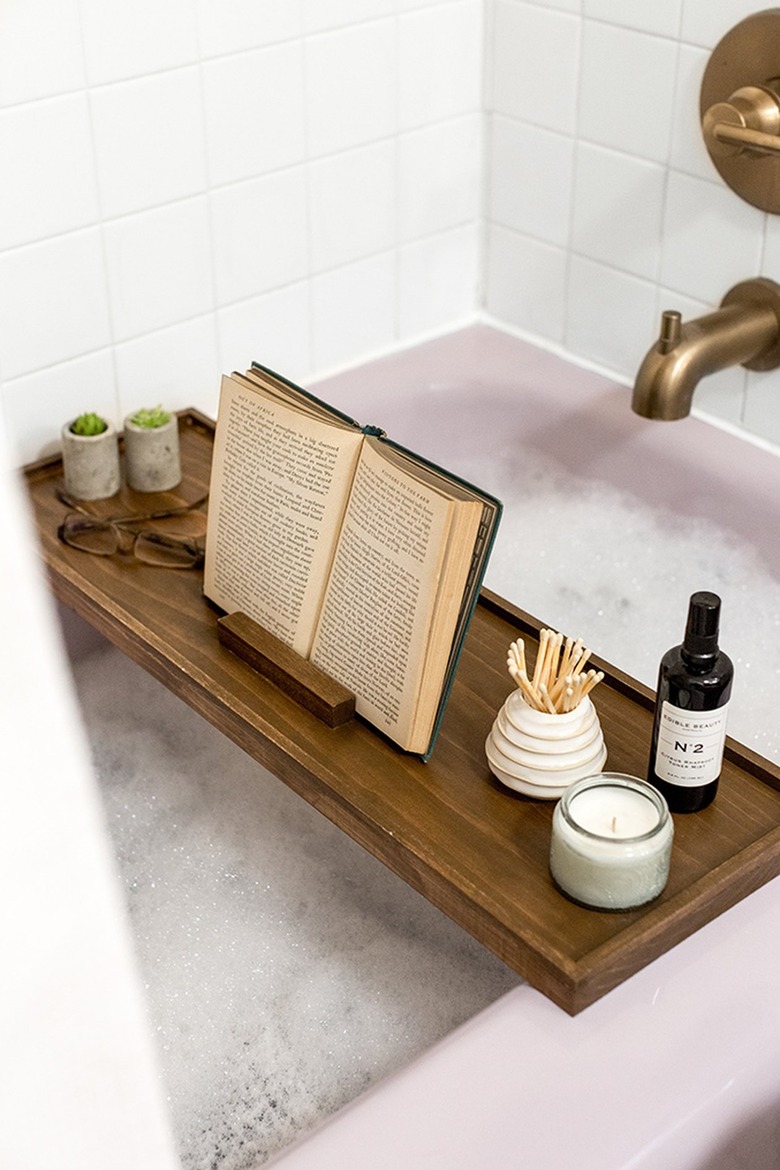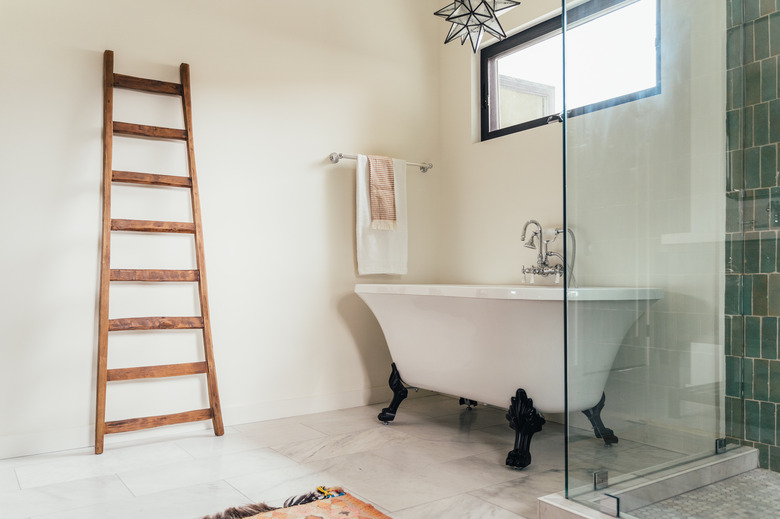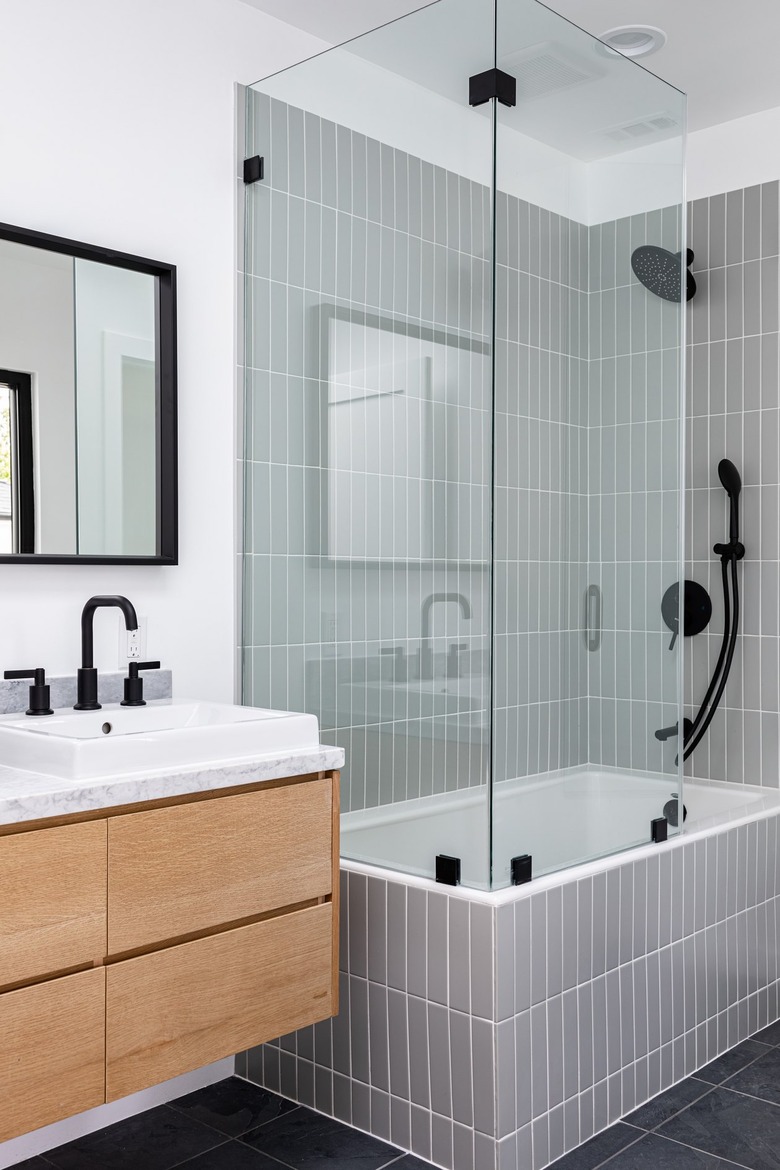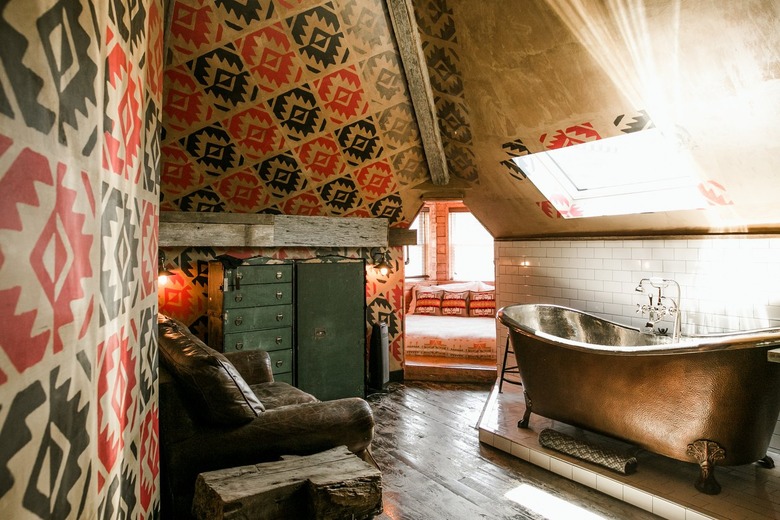Best Bathtub Materials
The best bathtub material is often a matter of personal preference based on cost, durability or even what works best given the bathroom's size or location. When it comes to longevity and classic looks, cast iron may be the best bathtub material, but it isn't the best for every situation due to its weight and its cost. Weight and cost are key factors to consider before choosing one material over another.
Cast Iron Bathtubs
Cast Iron Bathtubs
One of the oldest bathtub types widely used today, the cast iron tub offers a classic look with a durability that's hard to match. These tubs are made of iron with a porcelain enamel coating that prevents the tub from rusting as long as the enamel doesn't chip. The vintage clawfoot tub is the most recognizable cast iron tub style, although more modern styles are also offered in this material. One of the most desirable features of a cast iron tub is that it can be reglazed or re-enameled on the inside if the original enamel chips. The outside of the tub can be painted in virtually any color to match the bathroom color scheme.
A cast iron tub does have a few drawbacks. It can weigh 500 pounds or more when empty, according to Quality Bath. Installing this type of tub may require additional support beneath the floor. Due to its weight and size, it can also be difficult to maneuver into your home and into position in the bathroom. For these reasons, cast iron tubs are more common for first-floor bathroom installations, although it's not impossible to install them on higher floors.
New freestanding cast iron tubs cost a bit more than many other tubs, starting at more than $900 and running beyond 10 times that amount for luxury versions. Some cast iron drop-in tubs can be found for less than $500, however, as can cast iron freestanding tubs that are used. Expect to haul the tub yourself if you are purchasing it used.
Enameled Steel Tubs
Enameled Steel Tubs
An enameled steel tub is similar to a cast iron tub in that it's metal coated in an enamel. The metal on these steel tubs is thinner than the metal of a cast iron tub, with the finished steel tub weighing about 75 pounds, which is significantly lighter than cast iron.
Enameled steel tubs are fairly inexpensive, starting at about $150. These tubs don't flex the way acrylic and fiberglass tubs do. They're easy to clean thanks to the enamel coating, but this enamel can chip over time. Tubs in this material typically have one finished side and are designed to be installed in an alcove. They do not commonly come in other styles, such as freestanding or drop-in.
This type of tub also has a few drawbacks. The enamel isn't as thick as it is on a cast iron tub, so it chips more easily. It also doesn't retain water heat very well.
Fiberglass Bathtub Basics
Fiberglass Bathtub Basics
As its name implies, a fiberglass or fiberglass-reinforced plastic (FRP) bathtub is made of tiny strands of glass molded into a tub shape and coated with a special plastic-like resin. This may be the best bathtub material for second-floor bathrooms and for saving money, as it's lightweight and typically the least expensive of all readily available tub materials, starting at around $300. These tubs are available in a vast array of shapes.
As for its drawbacks, fiberglass has a few. This type of tub fades and scratches easily once its coating begins to wear. Fiberglass also becomes porous with wear and with cleaning. Once this happens, it creates potential for mold and mildew problems or even rotten wood beneath the tub, according to West Shore Home.
A fiberglass tub is thin and may flex, which may cause it to feel strange and unstable. The thinness also means that the water cools quicker than with some thicker tub materials. Since a fiberglass tub is brittle and easily damaged, it doesn't last as long as more durable tubs. With average use, it may last 10 to 15 years before it should be replaced.
Acrylic Bathtub Basics
Acrylic Bathtub Basics
Acrylic bathtubs are similar to fiberglass tubs in that they're lightweight and molded into a tub shape. They're also reinforced with fiberglass for added durability. Acrylic as a tub material isn't porous and can be custom made for your bathroom. Expect to spend at least $500 for the average acrylic tub, which is still significantly less expensive than cast iron or specialty materials.
Acrylic tubs are thicker than fiberglass, so they're less prone to flexing, and they retain heat better than fiberglass. They also resist cracks, fading and chipping. Some acrylics are pretreated to resist mold and mildew, making cleanup easy. Acrylic tubs are available in various colors and textures, whereas fiberglass and some other materials typically are not. An acrylic tub tends to be more durable than a fiberglass tub, and due to its many positive features, the acrylic tub is one of the most common.
As for drawbacks, acrylic can be damaged by harsh chemicals. The surface is relatively easy to scratch as well. It doesn't offer the same high-end appeal as a tub made from cast iron, stone or another luxury material.
Cast Polymer Bathtubs
Cast Polymer Bathtubs
Cast polymers, such as cultured marble, are designed to look like real stone but with far less weight and cost. They're often made of actual stone particles mixed with a resin. A gel-coat finish offers a somewhat durable, shiny surface. Cast polymer tubs tend to hold heat well and resist stains. They're also available in quite a few colors and styles.
Among its drawbacks, a cast polymer tub's coating may become brittle or wear out, which can cause cracks. Unfortunately, the cracks can't be repaired. Although this type of tub can be quite expensive, running $1,500 and up for cultured marble, it's not as durable as acrylic.
Specialty Bathtub Materials
Specialty Bathtub Materials
Tubs can be made of virtually any material that holds water and can be shaped into a tub. Copper, solid stone and wood are a few specialty tub types that are usually chosen for their looks rather than for being the best bathtub material overall. Handmade copper tubs offer a unique look and may be found in a handful of different styles, usually of the freestanding variety. They don't chip, crack or flex like synthetic tubs, but they can be extremely expensive, averaging upward of $2,000. They can also be hard to find and are heavy.
Solid stone tubs offer a natural, luxurious look as unique as the stone itself. These are carved from a solid stone material, such as granite, and are then usually polished on the inside and along the rim. As with solid stone countertops, stone tubs are very heavy and cost thousands of dollars. These tubs often weigh more than 1,800 pounds, so they're definitely not for DIY installation.
Wood bathtubs offer yet another completely natural material to serve as the focal point of a bathroom. These may be made from a variety of wood types that are designed to show off the wood's unique coloring and grain structure. Wood tubs require a lot of upkeep to prevent the water from harming the wood. Like stone, a wooden bathtub costs thousands of dollars depending on the wood and the size of the tub.



